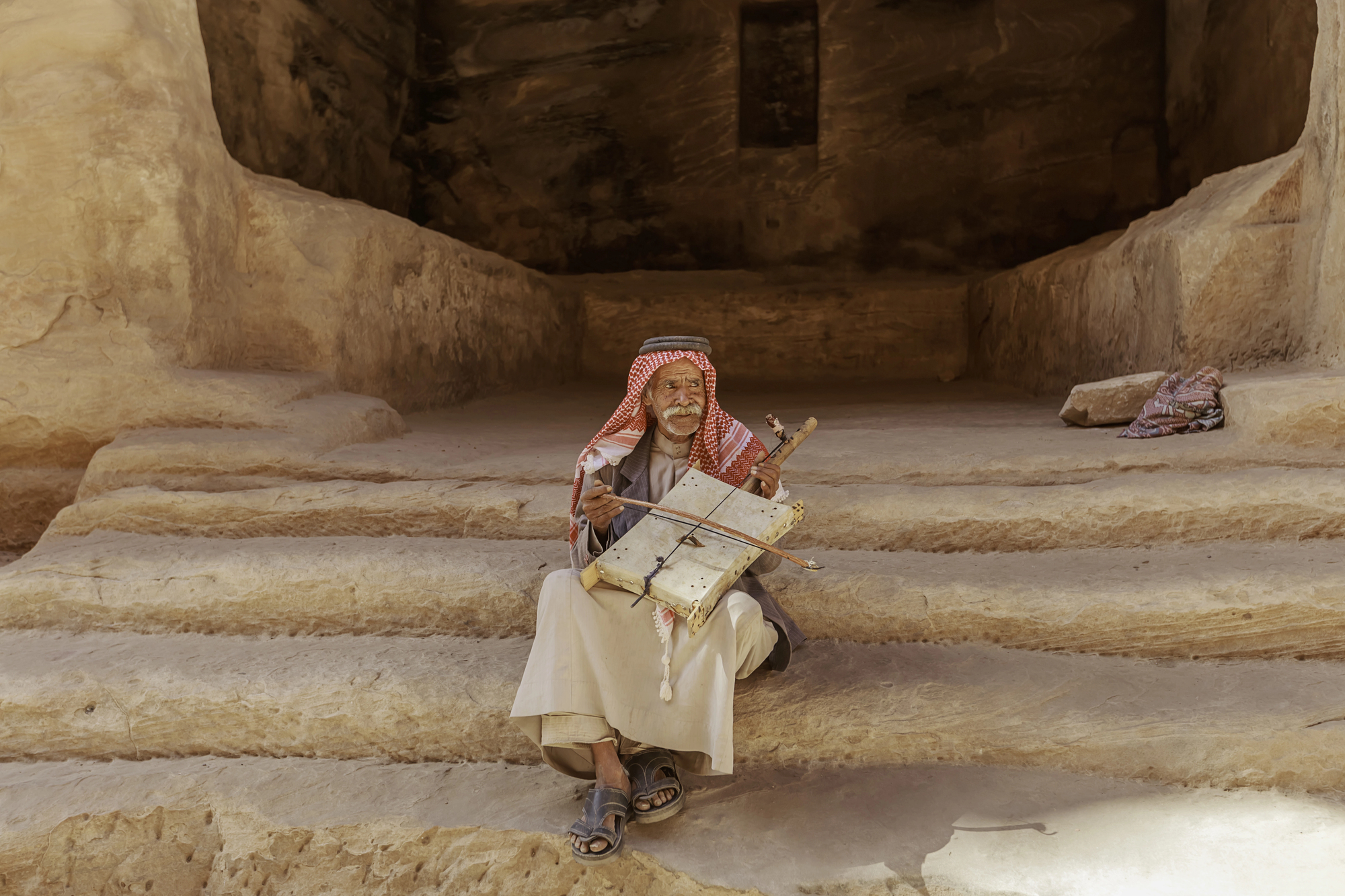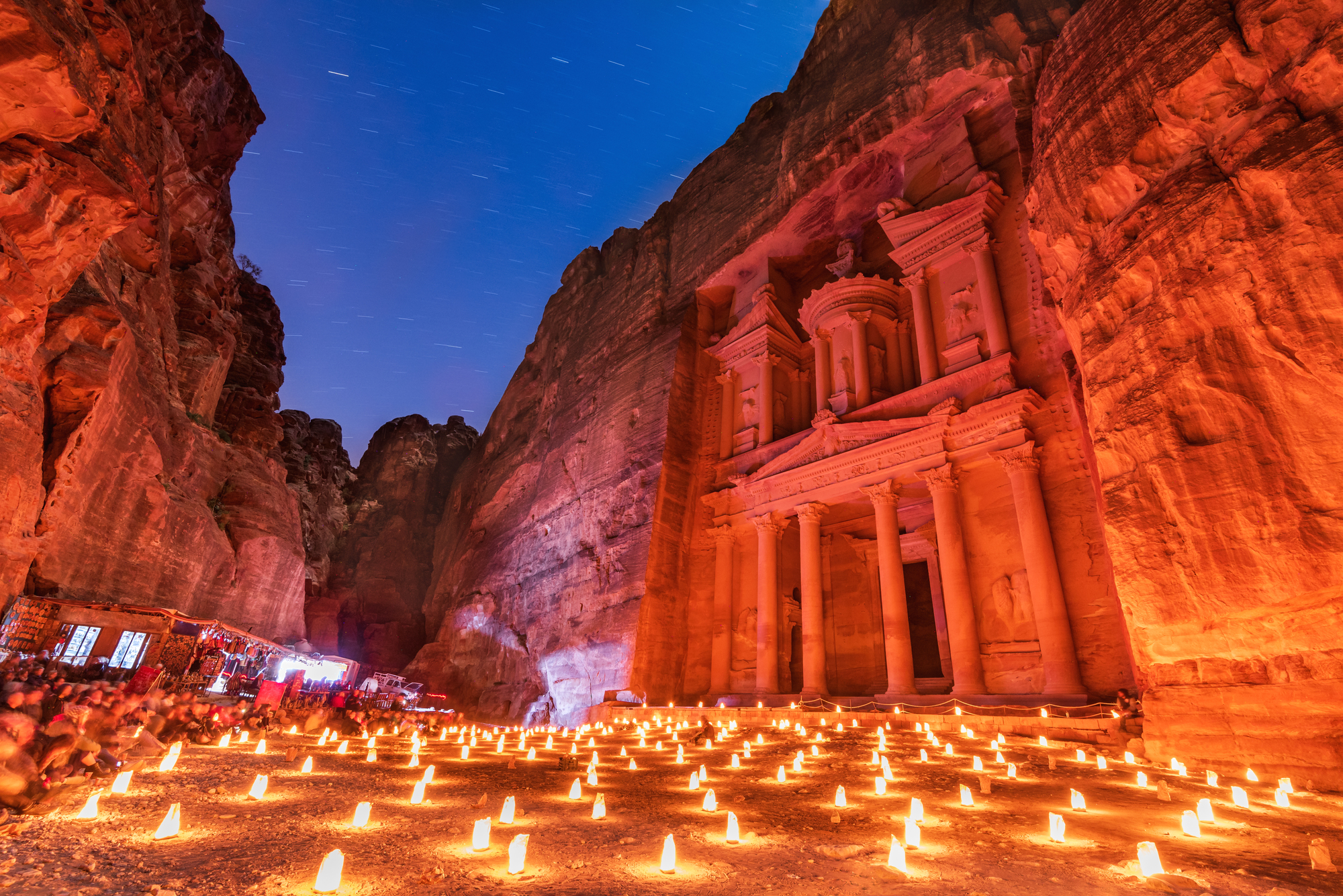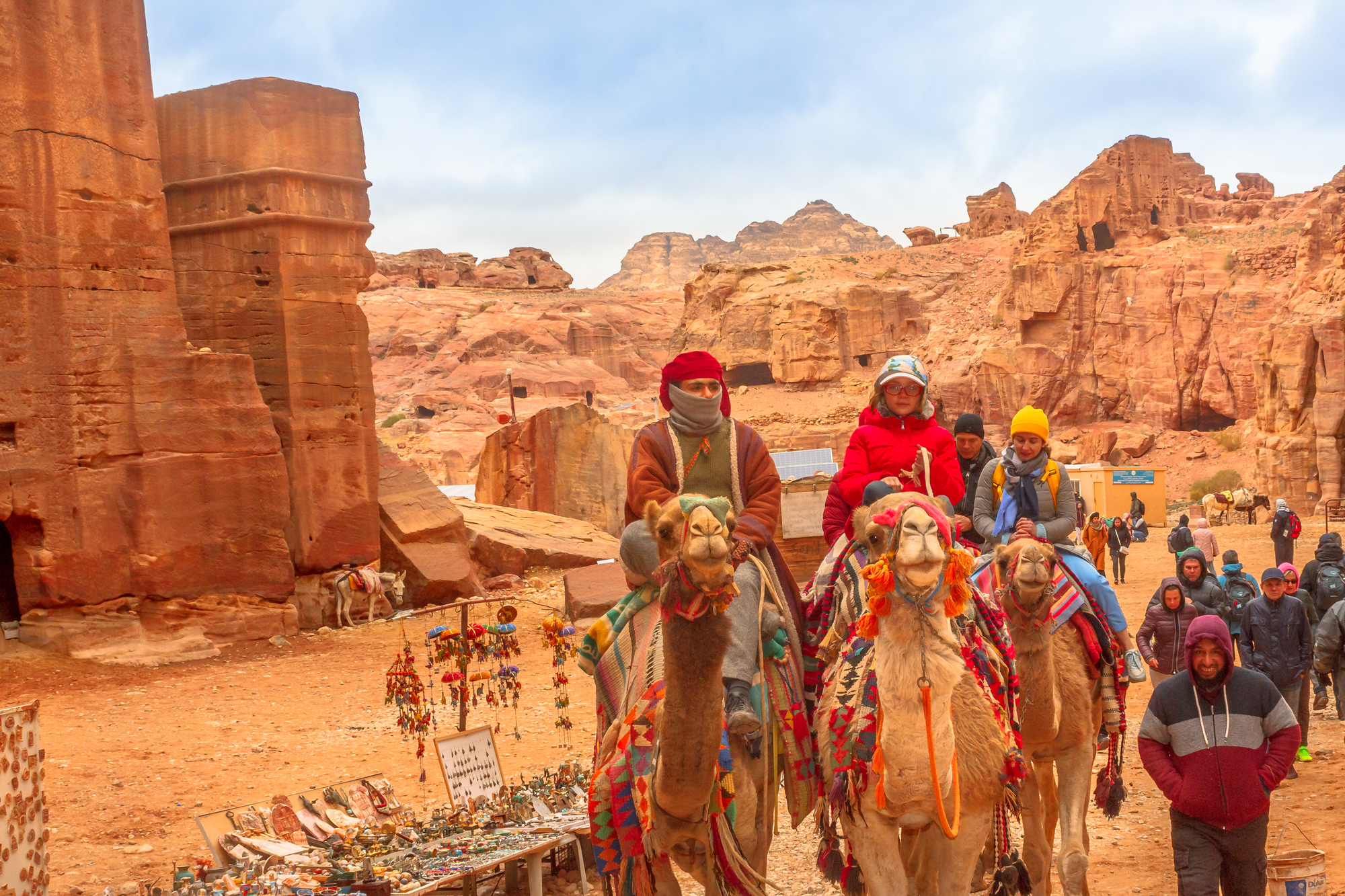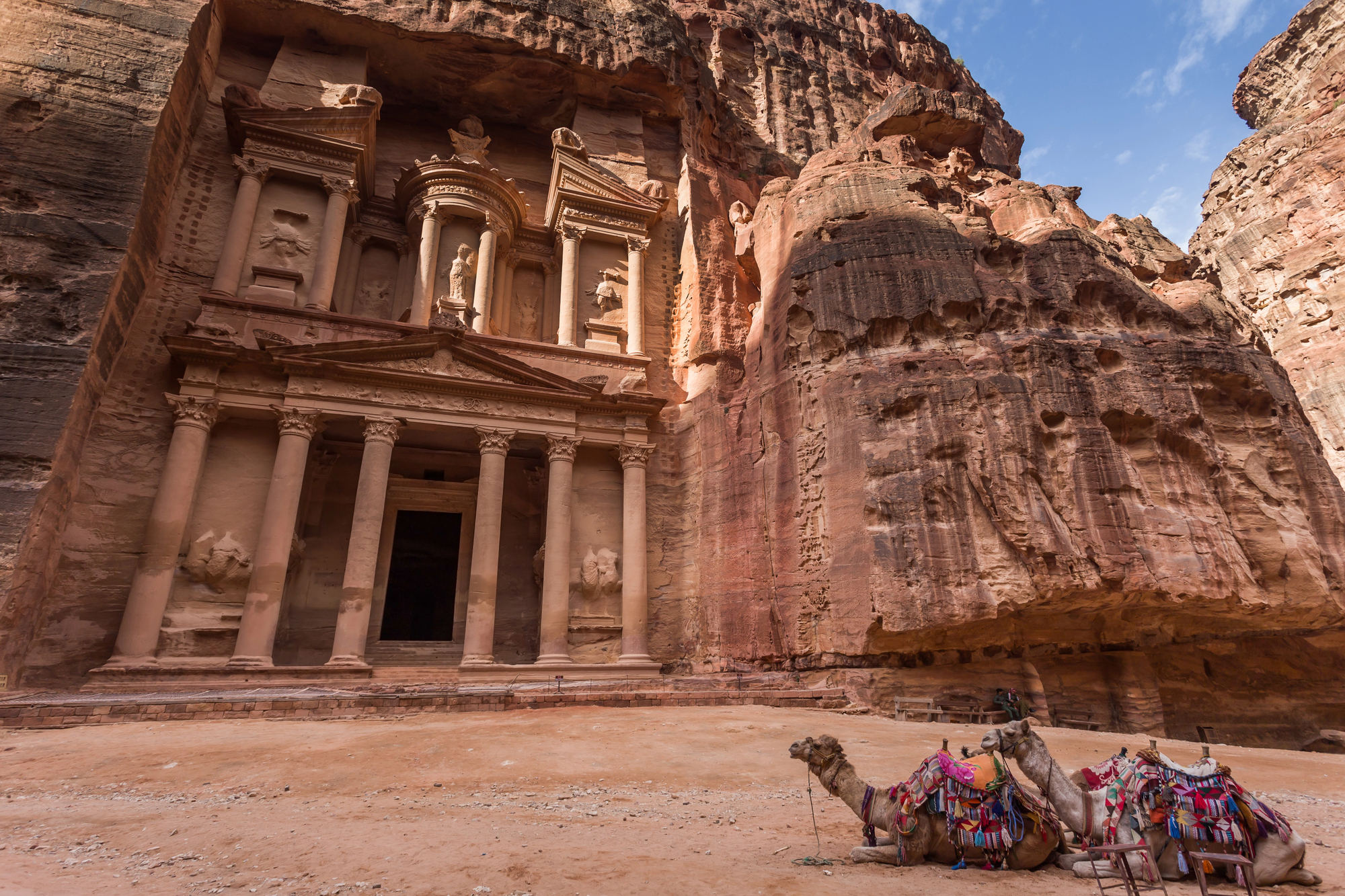Carved directly into towering sandstone cliffs nearly two millennia ago, the ancient Nabatean city of Petra remains one of humanity’s most jaw-dropping architectural achievements. Though guided tours have their merits, there’s an undeniable magic in exploring this UNESCO World Heritage site according to your own curiosities and rhythm.
Let’s dive into 15 practical strategies for creating a truly memorable independent experience at Jordan’s most celebrated archaeological treasure.
Arrive at Opening Time

Dawn bathes Petra’s distinctive rose-red stone in soft golden light – creating photographic magic impossible to capture once the day progresses. Gates open at 6am during summer and 7am in winter, so aim to arrive fifteen minutes early to secure your place among the first entrants.
You’ll likely experience the majestic Siq and Treasury in rare solitude – perhaps even completely alone if you’re lucky. Trust me, that predawn alarm feels utterly worth it once you’re standing before Al-Khazneh without another soul in sight.
Download Offline Resources

Cell coverage throughout Petra’s extensive landscape ranges from spotty to none – vexing unaware tourists while trying to obtain information. Smart tourists pre-load maps, audio guides, and guide books offline – ensuring confident peregrination between remote monuments without the distraction of connectivity issues.
Several great apps provide stimulating historical context for prominent structures that you can consult whenever. With these guides saved on your device, you will not spend precious exploration time struggling with patchy signals or constantly flipping through guidebooks.
Pack Strategically

The main path from the entrance to the Monastery stretches over an 8 mile round trip with significant elevation changes – demanding proper preparation for this physically taxing journey. Comfortable walking shoes are not just recommended – they’re just about a necessity when navigating over Petra’s rugged historic terrain.
Heat variations can be dramatic – over 100°F in late summer while, on the other hand, sometimes dropping well into the teens on winter mornings. Light, stackable garments will help buffer these variations nicely, and energy-dense snacks will help to maintain energy levels throughout this physically demanding archaeological foray. Nothing cuts short a Petra trip sooner than unnecessary bodily discomfort.
Like Travel Pug’s content? Follow us on MSN
Purchase a Multi-Day Pass

Petra’s sheer size defies systematic exploration in a single day – although numerous tourists attempt this rushed approach through limited itinerary schedules. Happily, the Jordanian tourist authorities offer multi-day tickets with tremendous value for money compared to single-day tickets.
The two-day ticket is barely more expensive than a day, while the three-day option provides fantastic discounts. Spreading your discovery over multiple visits allows for rich discovery without fatigue – and you’ll see magnificent buildings in varied lighting conditions during the day. The extra time makes a hurried checkbox experience one of depth.
Take Alternative Routes

The well-trodden path from Siq to Treasury (and perhaps onward to the Monastery) serves most visitors adequately – yet several fascinating alternative routes await more adventurous explorers. The moderately challenging Al-Khubtha trail ascends behind the Royal Tombs – rewarding hikers with breathtaking Treasury viewpoints from above that most guided groups never witness.
Even more dramatically, approaching the Monastery via Little Petra lets you discover this magnificent structure from behind – bypassing the notorious 800+ steps from the main basin. These less-traveled paths deliver both unique perspectives and blessed relief from crowds.
Visit the Petra Museum First

The recently inaugurated Petra Museum near the visitor center showcases over 300 artifacts alongside interactive displays illuminating Nabatean engineering prowess, cultural traditions, and historical significance. Dedicating just one hour here before entering the archaeological zone provides crucial contextual knowledge – suddenly transforming those seemingly random carved facades into comprehensible historical narratives with a clear purpose.
Understanding how Nabateans ingeniously managed scarce water resources or practiced their religious rituals adds profound depth to everything you’ll subsequently encounter. Plus, this modern facility offers exceptional climate control – particularly welcome during scorching months.
Like Travel Pug’s content? Follow us on MSN
Respect Sacred Spaces

Though primarily experienced as an archaeological attraction today, numerous spaces within Petra retain genuine spiritual significance for local Bedouin communities who maintained deep connections to this landscape centuries after the ancient city’s abandonment. Certain caves and alcoves serve religious purposes beyond their historical value – evidenced by candles, modest offerings, or other signs of contemporary veneration.
Independent travelers shoulder special responsibility to recognize these sensitive areas without tour guides providing cultural navigation. This cultural awareness fosters meaningful connections not just with ancient stones but with living traditions that continue to animate this remarkable place.
Explore Beyond the Treasury

That iconic Treasury facade graces every Jordan tourism brochure – leading some hasty visitors to snap photos of this magnificent entrance before promptly departing, mistakenly believing they’ve “done Petra.” In reality, the Treasury serves merely as a spectacular introduction to a vast urban complex containing over 800 documented structures spread across 60 square kilometers.
The equally impressive Monastery awaits those willing to climb, while the Street of Facades, Royal Tombs, Great Temple, and Byzantine Church showcase architectural diversity rarely captured in typical travel photography. Self-guided exploration allows appreciation of these less-famous but equally significant structures according to personal interest.
Time Your Photography Thoughtfully

Petra’s famous rose-colored sandstone undergoes a dramatic transformation throughout the day as sunlight angles shift across narrow canyons – creating distinct photographic opportunities at different hours. Serious photographers plan entire visits around these lighting conditions for specific monuments.
The Treasury achieves peak magnificence during mid-morning light, while the afternoon sun brings the Monastery to life most dramatically. Royal Tombs transform most spectacularly during sunset when rich amber tones intensify their already remarkable coloration.
Understanding these patterns helps capture unique images beyond the standard postcard shots that tour groups typically manage during rushed midday visits.
Like Travel Pug’s content? Follow us on MSN
Interact Respectfully with Bedouins

Generations of Bedouin families called Petra’s caves home until the 1980s, when governmental authorities relocated most residents to nearby settlements for site preservation. Many family descendants now work within the archaeological park – offering camel rides, handcrafted souvenirs, or refreshments to visitors.
These encounters provide opportunities for meaningful cultural exchange rather than mere commercial transactions. Taking time for unhurried conversation creates connections far more valuable than any physical souvenir.
Remember that many services operate on standardized pricing, minimizing uncomfortable bargaining situations. These authentic human interactions frequently become cherished highlights that travelers recall long after specific monuments blur in memory.
Ascend to the High Place of Sacrifice

A moderately challenging trail winds upward from the main basin to the High Place of Sacrifice – an ancient Nabatean ceremonial platform providing spectacular panoramic views across Petra’s central valley. This significant religious site features remarkably preserved altars and drainage channels once used in worship rituals.
Beyond historical importance, this elevated vantage point delivers a crucial geographical perspective on how various monuments relate spatially across the landscape. The circular route descending through Wadi Farasa reveals additional tombs and structures rarely visited by standard tour groups following main paths. This diverse circuit offers both cultural insights and physical variety beyond the central trail network.
Stay Hydrated Strategically

Petra’s combination of desert climate, significant walking distances, and limited shade creates ideal conditions for dehydration – a genuinely dangerous situation when far from modern facilities. While carrying water is essential, knowing where to replenish supplies helps travelers avoid lugging excessive weight throughout the day.
Several restaurants and cafes operate within the main archaeological area, offering overpriced but convenient refreshments when needed. An insulated bottle keeps water cooler throughout scorching days, while planning rest breaks around established facilities maintains energy for continued exploration.
This simple strategy prevents numerous medical emergencies that occur annually from heat-related issues that overtake unprepared visitors.
Like Travel Pug’s content? Follow us on MSN
Attend Petra by Night

Three evenings weekly, site administrators open the Siq and Treasury area for a mesmerizing candlelit experience appropriately named “Petra by Night.” Over 1,500 candles illuminate the narrow passage leading to the Treasury, recreating an atmosphere ancient visitors might have experienced before electricity existed.
Though undeniably touristy, this special event offers a completely different perspective from daytime visits – the haunting music and storytelling program provides cultural context while dramatic lighting transforms familiar structures into mysterious silhouettes. Advance tickets prevent disappointment as these popular events frequently sell out, especially during peak tourist seasons when demand far exceeds the limited capacity.
Document Details Beyond Monuments

While Petra’s grand facades naturally command attention, independent exploration allows appreciation of smaller details that tour groups invariably rush past without notice. Intricate water channels carved into canyon walls demonstrate sophisticated Nabatean hydraulic engineering that enabled desert civilization.
Weathered inscriptions in ancient languages tell stories for those patient enough to notice them. Natural geological features like cross-bedded sandstone layers reveal processes spanning millions of years that created this landscape before human intervention.
These subtle elements collectively build a deeper appreciation for both natural and human achievement beyond simply photographing major monuments. The richest experiences often hide in overlooked details between famous attractions.
Connect With Local Knowledge

Though exploring independently without formal guides, numerous opportunities exist for gaining local insights through informal connections throughout your visit. Petra’s visitor center staff provides excellent introductory information, while site wardens stationed throughout the complex often share fascinating details when approached respectfully.
Some Bedouin vendors possess intimate knowledge of lesser-known features or optimal photography locations beyond typical guidebook recommendations. Remaining receptive to these spontaneous interactions reveals aspects of Petra that organized tours typically miss entirely.
The powerful combination of thorough pre-trip research with on-site local wisdom creates the richest possible understanding of this complex archaeological treasure.
Like Travel Pug’s content? Follow us on MSN
The Enduring Impact

Exploring Petra independently transforms this archaeological wonder from passive sightseeing into active discovery shaped by personal curiosity. Without fixed itineraries or group constraints, each visitor develops unique connections with this ancient landscape based on individual interests and intuition.
The Nabateans themselves were fiercely independent desert traders who carved their remarkable city as a bold expression of cultural identity and engineering prowess. There seems something particularly fitting about exploring their greatest achievement through self-directed discovery rather than prescribed pathways dictated by others.
The memories created through this approach typically remain vivid decades after visiting, evolving from mere tourism into a truly transformative travel experience that continues to resonate throughout life.
More from Travel Pug

- Cities Growing so Fast You Won’t Recognize Them in 10 Years
- 13 Destinations Where Tourists Regularly Regret Their Trip
- 20 Obscure WWII Sites Even History Buffs Don’t Know About
- 10 Under-the-Radar Mountain Towns That Are Both Affordable and Beautiful
- Remote Villages in Europe Where You Can Live for Free in Exchange for Work
Like Travel Pug’s content? Follow us on MSN
